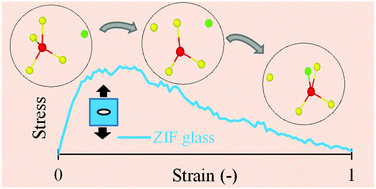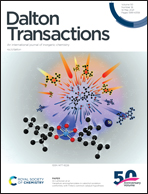Bond switching is responsible for nanoductility in zeolitic imidazolate framework glasses†
Abstract
Understanding of the fracture mechanism of metal–organic framework glasses remains limited. Using reactive molecular dynamics simulations, we here find that three zeolitic imidazolate framework glasses exhibit pronounced nanoductility upon fracture. This fracture behavior is confirmed by fracture toughness predictions. The results indicate that a model based on a purely brittle fracture significantly underestimates the simulated fracture toughness. We ascribe the nanoductility to a Zn–N bond switching mechanism, which is found to be more pronounced for smaller organic linkers. Thus, this study provides insights into the fracture mechanism of the low-toughness, yet nanoductile metal–organic framework glasses.



 Please wait while we load your content...
Please wait while we load your content...